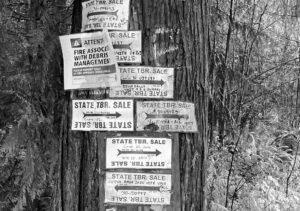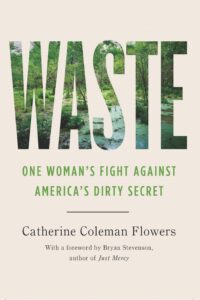Beneath the rhetoric: What DNR says vs what DNR does
In the last several months, representatives of Washington state’s Department of Natural Resources (DNR) have responded to an unprecedented volume of public outcry and reasoned argument objecting to the agency’s “business-as-usual” plans to clearcut mature older forests on state land. It cannot be easy to be a career public servant working under these conditions; yet these are the very conditions that are basic to making decisions that reflect the public interest. In that spirit, we have highlighted here a few talking points DNR has developed under the leadership of Commissioner of Public Lands, Hilary Franz. These are followed by the relevant facts compiled by several friends of Washington’s legacy forests.
What DNR says. “DNR shares your concerns about conserving biodiversity.”
The facts. Representatives of DNR have stated publicly time and again that forests on public lands are not managed for biodiversity, but rather to generate revenue. DNR has made plans to log nearly all of the older, natural, mature stands that remain in Capitol State Forest as well as in many other small watersheds across the state.
If DNR follows through on these plans, it will lead to the permanent destruction of dynamic ecological lifeboats and structurally complex carbon sequesterers. The moonscapes that remain will become fire- and disease-prone monocrop plantations.
What DNR says. “We thoroughly reviewed the sale area and found no old growth forest.”
The facts. Under DNR’s definition, “old growth forest” no longer exists on most of the lands the agency manages. That forest type will never return on any of the hundreds of acres slated for clearcutting by DNR at the direction of Franz. Once clearcut, the successor will be a monocrop, single-aged, high-rotation tree farm. This is the antithesis of naturally regenerated, mixed species, mixed age, long-lived, structurally complex, fire-resistant and carbon-dense forest habitat—“legacy forests” or “primeval forests.”
The “thorough review” in the case of recent timber sales, is limited to the parameters of the 1997 Habitat Conservation Plan (HCP). These parameters exclude new information such as, for example, how climate change is increasing wildfire severity, as well as new discoveries of rare fauna. The HCP studies were “already done” long ago. The forests are deemed sacrifice zones, based on the mantra of “economic certainty” and “no surprises” that comes with the “business-as-usual” paradigm.
What DNR says. DNR policies “protect old growth forests.”
The facts. DNR was prepared to log up to 12 acres of bona fide old growth forest in the headwaters of McLane Creek earlier this year. Only after interested parties provided photo documentation of 400-year old trees to the Seattle Times was the logging called off. More recently, DNR has publicly stated that there is nothing “even remotely close” to old growth in the “Green Thomas” timber sale in Wahkiakum County. This was approved for auction and sold last year for $2.6 million. An independent stand age assessment of the “Green Thomas” units, however, reveals that this timber sale will lead to the destruction of trees that are close to 200 years old.
Meanwhile, DNR is planning to auction hundreds of acres of legacy forests across Western Washington that are on a healthy trajectory to old growth. These include, among many others, the recently approved “Bluehorse” timber sale in Capitol State Forest and the scheduled “Bessie” sale near Lake Whatcom, where there are dozens of 200-foot tall trees that are close to four feet in diameter..
What DNR says. “During the timber sale process, there are multiple opportunities for public input, including a public comment period during State Environmental Policy Act review and another before approval by the Board of Natural Resources at its monthly meeting.”
The facts. A common assertion in a failed environmental review process is that everyone has had plenty of chances to comment. The truth is that the comment process is moot. The decision of what to do has been made prior to public comment opportunities and the plan moves forward without meaningful public support. Since this is illegal under state and national environmental policy law, part of the reason for the Habitat Conservation Plan was to front-load the decision-making process and side-step the need to address public concerns.
In another blow to public input, the Board of Natural Resources eliminated the opportunity for public comment prior to timber sale approvals as of December 2021. The longstanding norm at these meetings had been two periods of public comment: one on “general items of interest” and the other on “timber sale action items.” Then, at the February 2022 Board meeting, public comment was abruptly limited to a 60-minute period with the result that of the 51 people registered to speak, 17 were prevented from saying anything. These actions undermine public confidence in DNR decisions.
What DNR says. Revenue from timber sales helps DNR meet its financial obligations to specific beneficiaries, including public schools and rural counties.
The facts. It’s true that DNR’s Policy for Sustainable Forests states that DNR must act with “undivided loyalty” to trust beneficiaries, to the exclusion of all other interests. But it’s also true that Article XVI of the Washington State Constitution states unequivocally that “All the public lands granted to the state are held in trust for all the people.”
DNR’s interpretation of what they and the timber industry call “the trust mandate” is currently being challenged in the Washington State Supreme Court. The Common School Trust is the biggest beneficiary of revenue from sales, receiving ~60% of the total (after DNR takes its cut). Washington State Superintendent of Public Instruction, Chris Reykdal, who serves on the Board of Natural Resources, has rejected this funding model. In January 2022 on Northwest Public Broadcasting, he said: “Step one for me, is to extract schools out of this question, stop letting people use school construction as the excuse to harvest.”
What DNR says. “DNR-managed forests are critical to the supply of timber in Washington State, and keeps us from having to bring in timber from other states or countries.”
The facts. This talking point exposes DNR’s institutional bias in favor of the timber industry’s broken paradigm. The total volume of logs harvested in Washington state comes predominantly from forests owned by private interests. These companies ship a significant percentage of their logs overseas. (Federal law prohibits the overseas export of logs harvested from public lands in Washington.) Ending the overharvesting of irreplaceable legacy forests on public lands would have minimal impact on the overall supply of wood in Washington state. DNR’s annual output typically represents less than 20% of raw logs produced here. Few sawmills remain with the capacity to process such large logs in-state.
Shortly after Commissioner Franz took office, the DNR stopped publishing both the annual Timber Harvest Report and the biennial Mill Survey. The numbers from 2016—the last Mill Survey produced under Franz’s leadership—are instructive. That year a total of 3,100 MMBF (million board feet) of raw logs were produced in Washington. 54% of the logs came from private, industrial plantations, 16% from small landholders,16% from DNR-managed lands, 5% from tribal lands and 3% from Federal forests.
Twenty-eight percent of that 3,100 MMBF went overseas, primarily to China. These exports represent the single most significant loss of wood and wood-related jobs in Washington. Students of the timber economy have observed that logging, trucking and stevedoring don’t employ large numbers of people, whereas labor-intensive wood processing does.
When private timber companies export raw logs—think of all those ships that leave the Port of Olympia filled with wood—they are exporting a large number of jobs. The tiny volume of MMBF represented by legacy forests on public land are basically nothing compared to what private forests export with little benefit to local communities: a painful example of the “resource curse” right here at home.
Beneath the rhetoric: follow the moneyObservers familiar with Washington state’s Department of Natural Resources (DNR) have remarked that the agency once again appears to be managing forests on public lands as private holdings for the benefit of private logging interests. Although the current Commissioner of Public Lands, Hilary Franz, campaigned as an environmentalist, public records demonstrate that she has succumbed to the overtures of the timber industry and taken their money hand over fist. A website launched in 2016 to support Franz’s first campaign for Commissioner states unequivocally that Franz “doesn’t take campaign contributions from [timber] corporations and her decisions won’t be affected by their money.” This turns out to have been an aspirational statement on the part of Franz’s early supporters. For the 2020 campaign, according to the Public Disclosure Commission, the Commissioner of Public Lands took more than $25,000 from the very corporations this advertisement disavows. Last month it was revealed that in the latest cycle of campaign finance, she took in at least another $14,000. Here’s a list of the most recent donations—note that four of the nine are headquartered out-of-state: $2,000 — Hampton Lumber (Portland OR) $2,000 — American Forest Resource Council (Portland OR) $2,000 — Rayonier Operating Company LLC (Yulee FL) $2,000 — Vaagen Bros. Lumber, Inc.$2,000 — Washington Forest Protection Agency PAC $1,500 — Noble Forest Company $1,000 — Green Diamond Resource Company $1,000 — Sierra Pacific Industries (Redding CA) $500 — Port Blakely Tree Farms LP
|


Be First to Comment